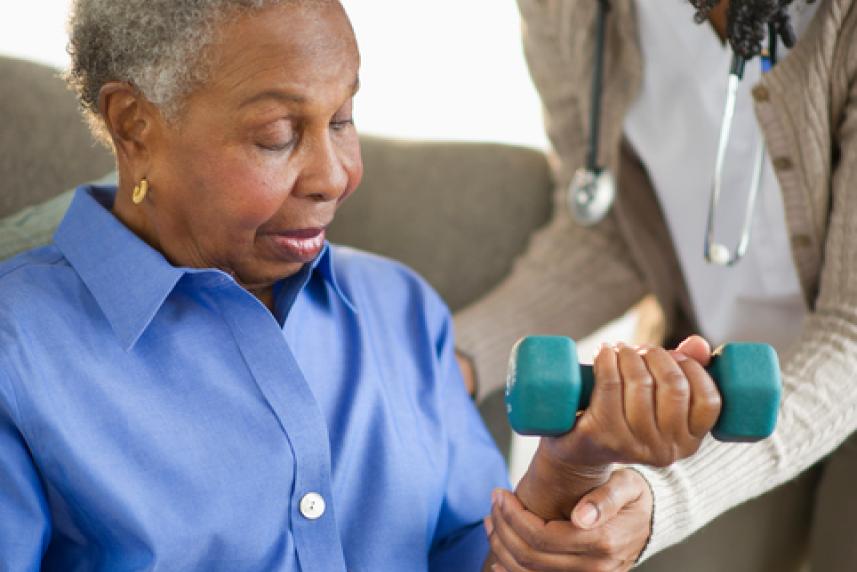Seven tips to prevent falls
Each year, one in three older adults falls, often with severe results for health and independence. But you can take simple steps to stay safe and active

Falls are all too common among older adults. In fact, one in three older adults will fall this year. That’s a big concern because bouncing back isn’t always so simple.
Falls are the top cause of injuries in seniors, including head injuries, fractures, and even spinal cord injuries, warns Dr. Cynthia J. Brown, director of the division of gerontology, geriatrics, and palliative care at the University of Alabama at Birmingham. Fortunately, some simple steps can safeguard your home and protect you on the go.
Know the top home hazards
While a fall can happen anywhere, certain places invite more danger. One of the top rooms for concern: the bathroom. “I ask my patients to tell me one soft place they can land in their bathroom if they fall,” says Dr. Brown. “All have answered that there aren’t any.” Dr. Brown recommends installing grab bars in the shower or beside the toilet. It’s also smart to use a non-slip mat in the shower.
Stairs are another place where a fall can lead to a significant injury. Having handrails on both sides and using them can reduce the risk of a fall, says Dr. Brown.
Take a walking tour
“In our fall-prevention clinic at the Birmingham VA Medical Center, we encourage our patients to walk through their homes looking for hazards,” says Dr. Brown. Ask these questions:
- Are the pathways clear?
- Is there room for you and your ambulatory device, such as a cane or walker, if you have one?
- Are there loose rugs you can trip over?
- Is the lighting bright enough to allow you to see?
“The Centers for Disease Control and Prevention has a great checklist that older adults and their families can use to ensure the home environment is safe,” she says. Find it at https://www.cdc.gov/steadi/pdf/STEADI-Brochure-CheckForSafety-508.pdf.
Ask for help
For ambulatory devices, Medicare Part B can help cover the cost of durable medical equipment, says Dr. Brown. If you require assistance installing grab bars, railings, or other safety guards, check with local community or religious organizations, she suggests.
Give yourself a steady foundation
Studies show that footwear can make a difference in avoiding falls, says Dr. Brown. “Shoes with good support, low heels, and a back—no slip-ons—are best.”
Improve strength, balance, and flexibility
“Staying strong is critical, since people who are weak are four times as likely to fall as people who are strong,” says Dr. Brown. “Simple exercises, like chair stands (trying to stand from a kitchen chair without using your arms), can help build your leg muscles.”
Balance and flexibility are also important. A number of studies have shown that Tai Chi is beneficial in those areas, she says. Look for classes offered in your community. If needed, your doctor can refer you to a physical therapist who can teach you an exercise routine to do in your home, adds Dr. Brown.
Talk with your doctor
If you’re concerned about falls or risk factors that affect your mobility, make sure to bring up the topic with your doctor.
“Ideally, your doctors should ask at least once a year about falls,” says Dr. Brown. “But if they don’t, let them know if you have fallen. They can watch you walk and check to see how steady you are. They can also think about your medications and other factors that might contribute to falls. But if they don’t know you have experienced a fall, they can’t help you.”
Medications can increase the risk of falls, as can poor vision, dizziness, and circulation issues in your feet. People who have memory problems are more prone to falls.
Don’t live in fear
“After a fall, many people develop a fear of falling,” says Dr. Brown. “This fear makes them much more cautious, to the point that they may restrict their activities for fear of having another fall.”
While being cautious is often good, this fear can interfere with your lifestyle. Don’t let it! “Gaining confidence and improving your balance through exercise can help,” says Dr. Brown. “Many people also find that having a cane or walker makes them feel more secure and that they are more independent and adventurous with the assistive device.”


